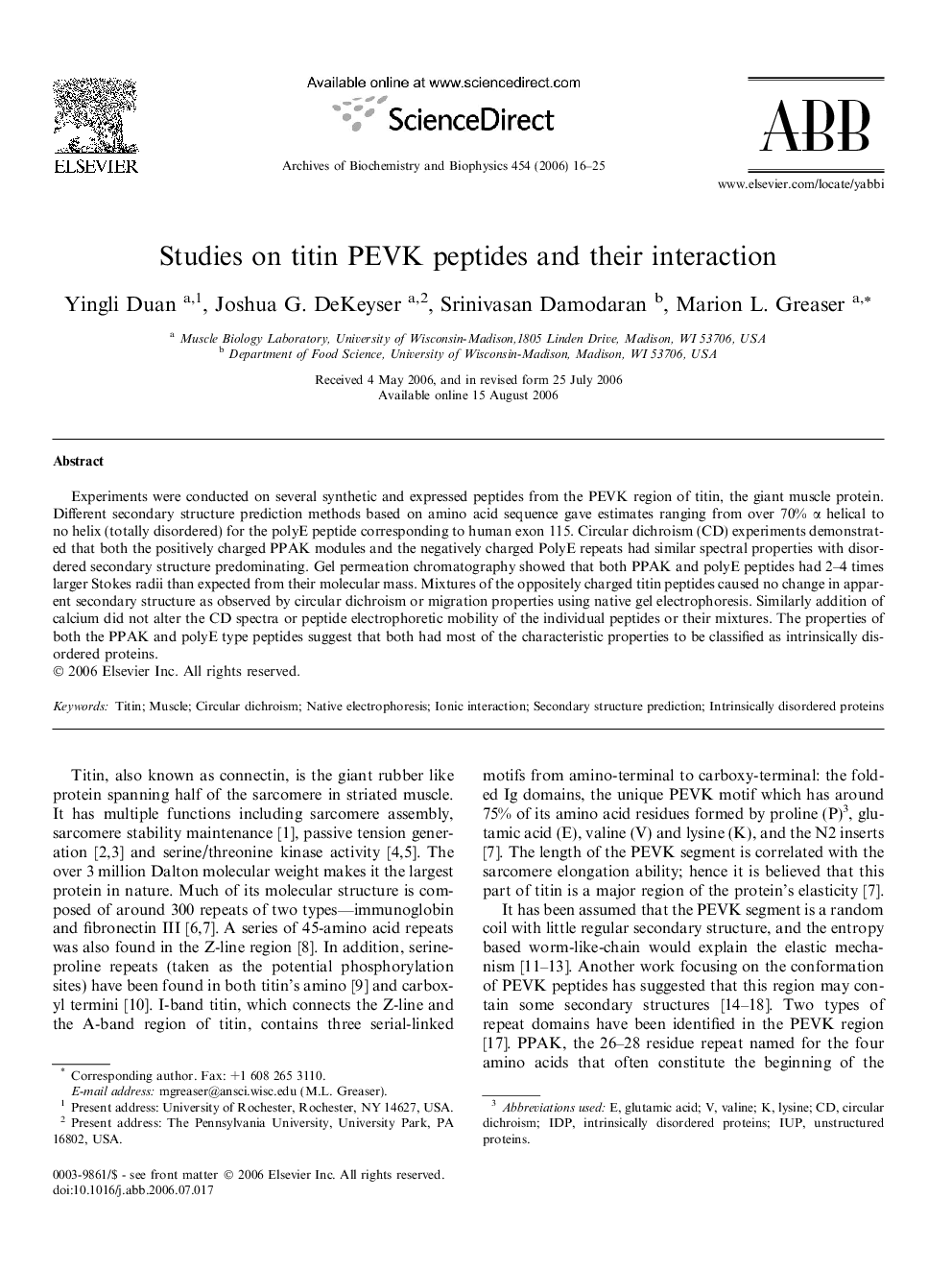| Article ID | Journal | Published Year | Pages | File Type |
|---|---|---|---|---|
| 1927255 | Archives of Biochemistry and Biophysics | 2006 | 10 Pages |
Experiments were conducted on several synthetic and expressed peptides from the PEVK region of titin, the giant muscle protein. Different secondary structure prediction methods based on amino acid sequence gave estimates ranging from over 70% α helical to no helix (totally disordered) for the polyE peptide corresponding to human exon 115. Circular dichroism (CD) experiments demonstrated that both the positively charged PPAK modules and the negatively charged PolyE repeats had similar spectral properties with disordered secondary structure predominating. Gel permeation chromatography showed that both PPAK and polyE peptides had 2–4 times larger Stokes radii than expected from their molecular mass. Mixtures of the oppositely charged titin peptides caused no change in apparent secondary structure as observed by circular dichroism or migration properties using native gel electrophoresis. Similarly addition of calcium did not alter the CD spectra or peptide electrophoretic mobility of the individual peptides or their mixtures. The properties of both the PPAK and polyE type peptides suggest that both had most of the characteristic properties to be classified as intrinsically disordered proteins.
